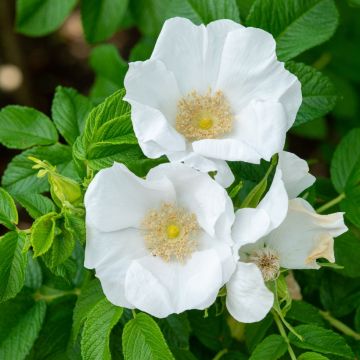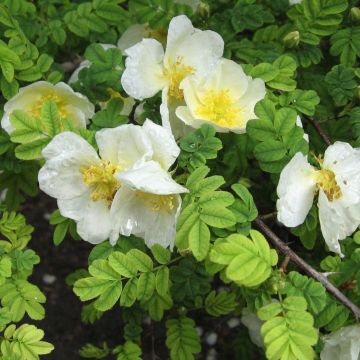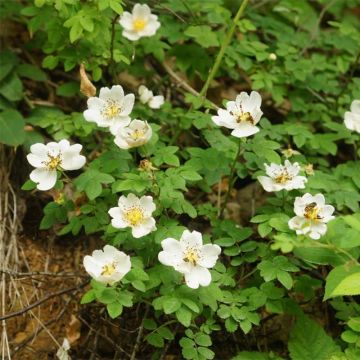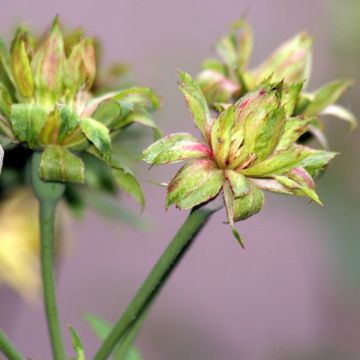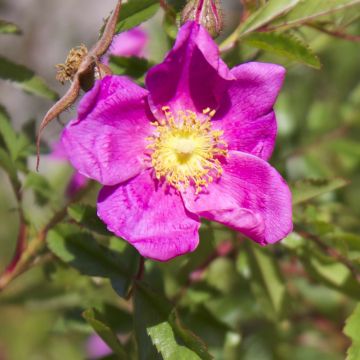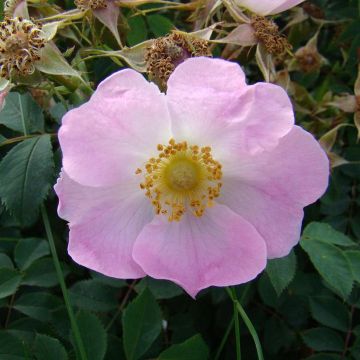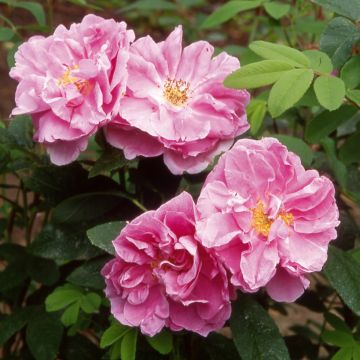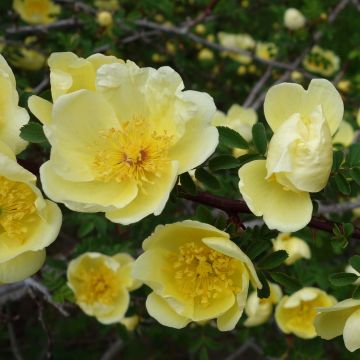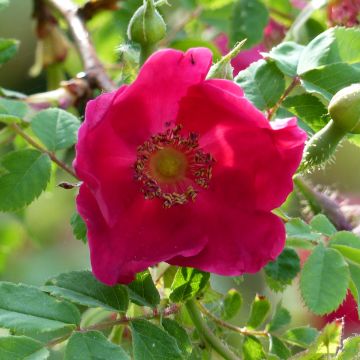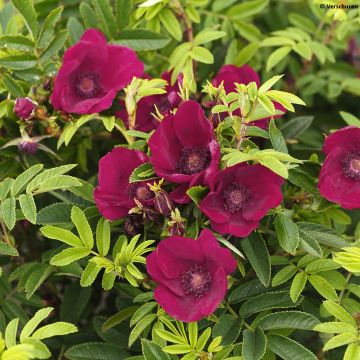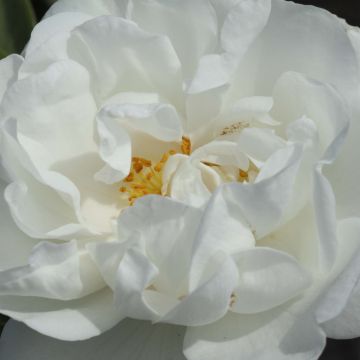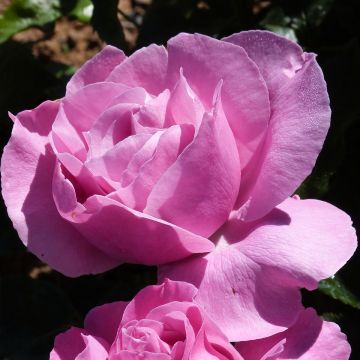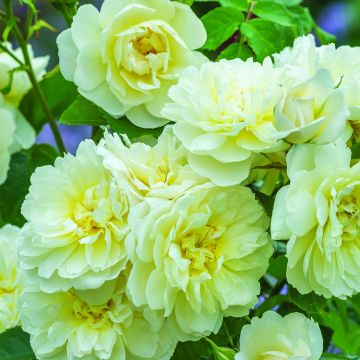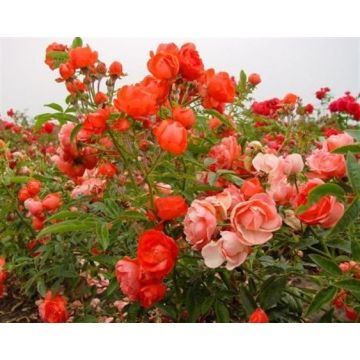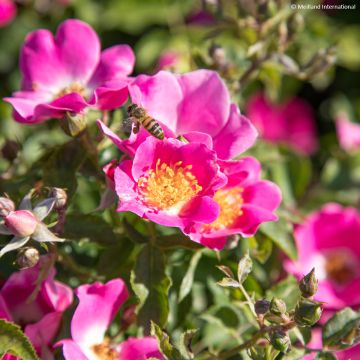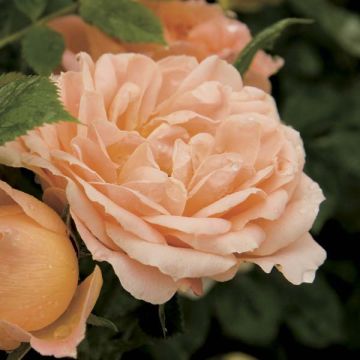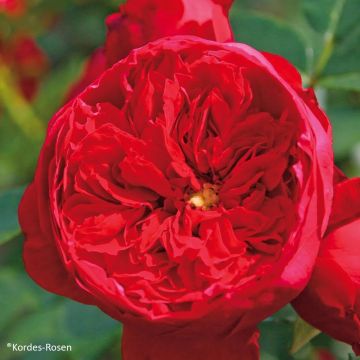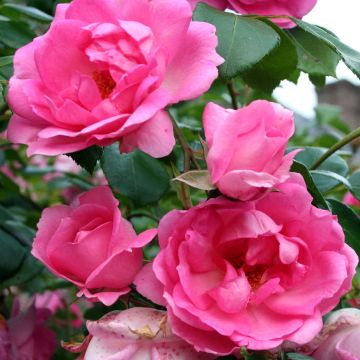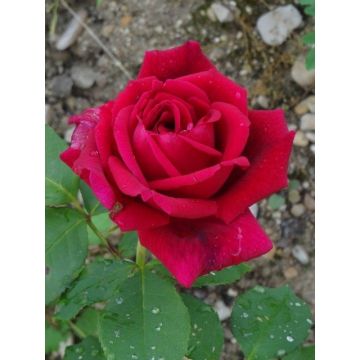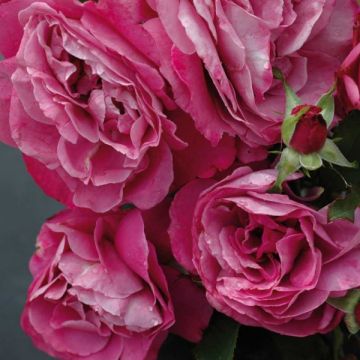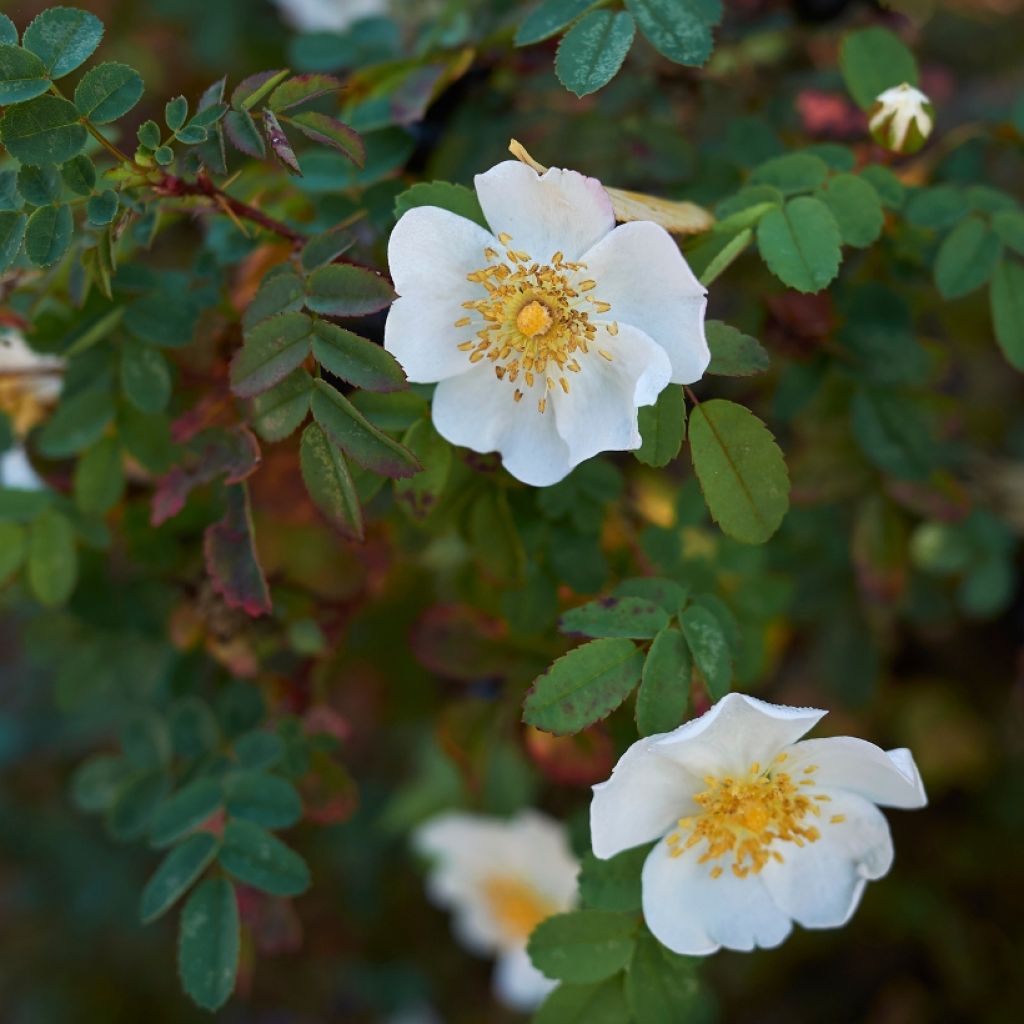

Rosa pimpinellifolia
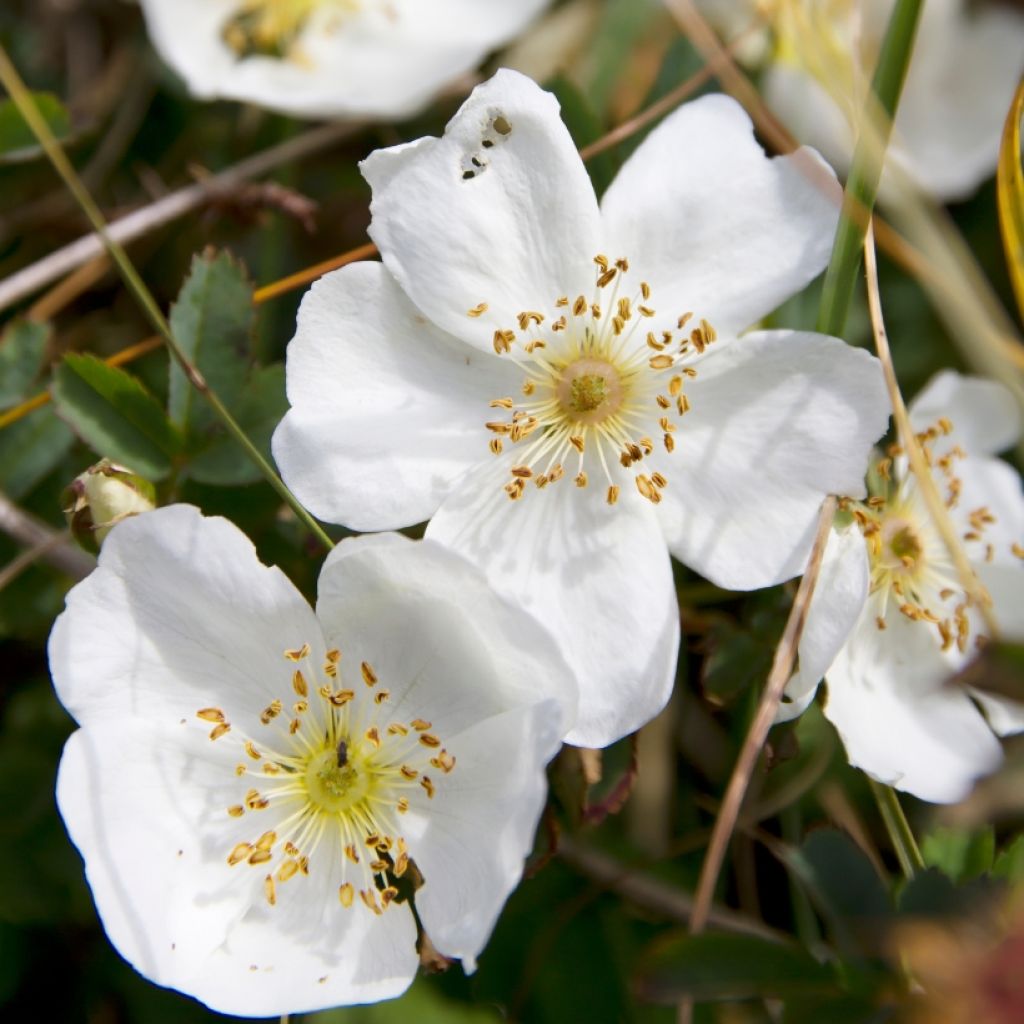

Rosa pimpinellifolia
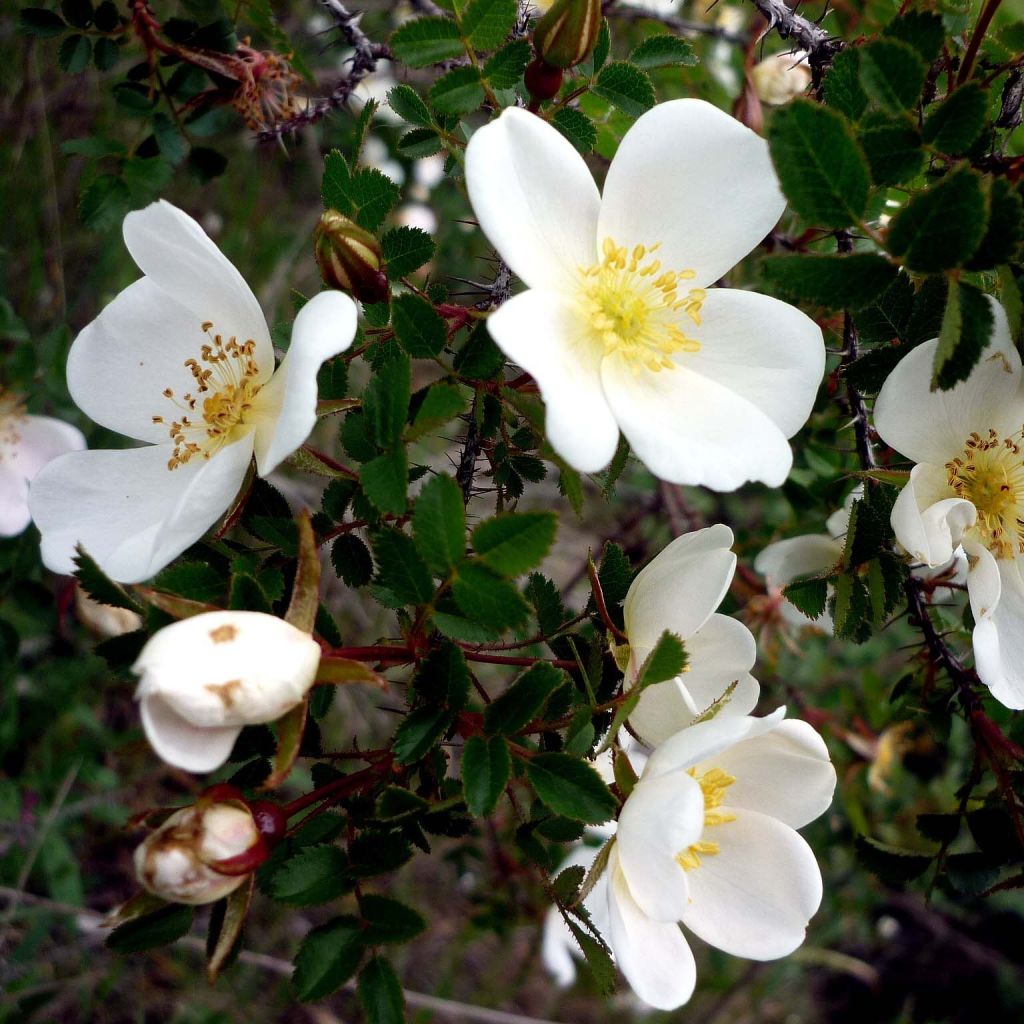

Rosa pimpinellifolia
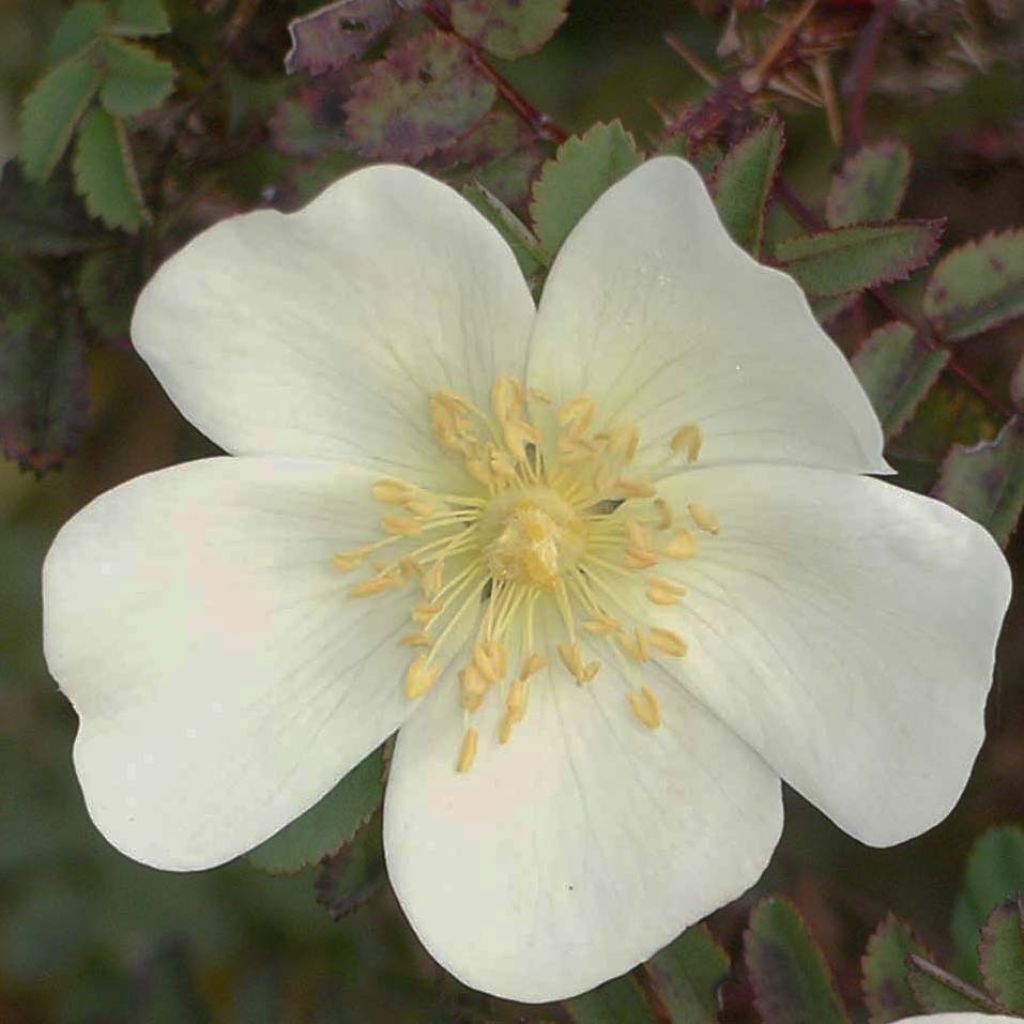

Rosa pimpinellifolia
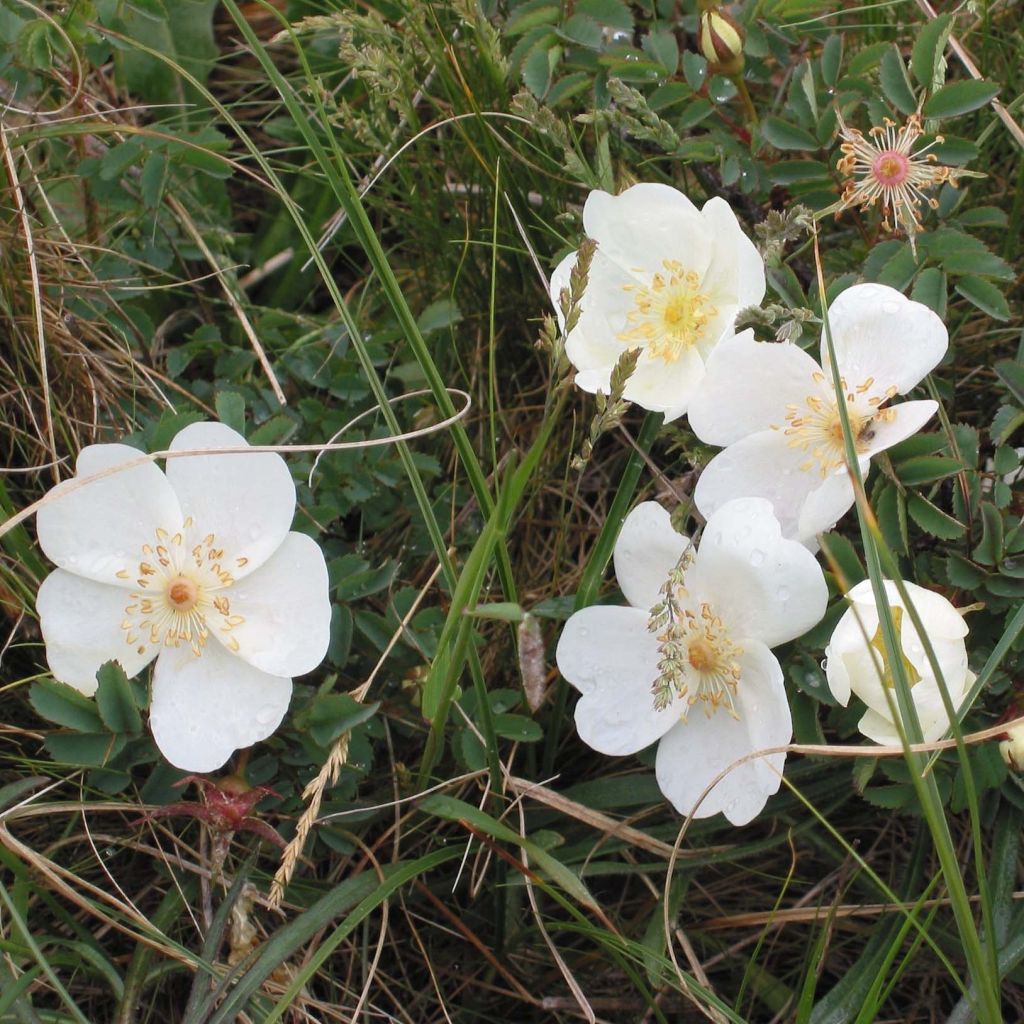

Rosa pimpinellifolia
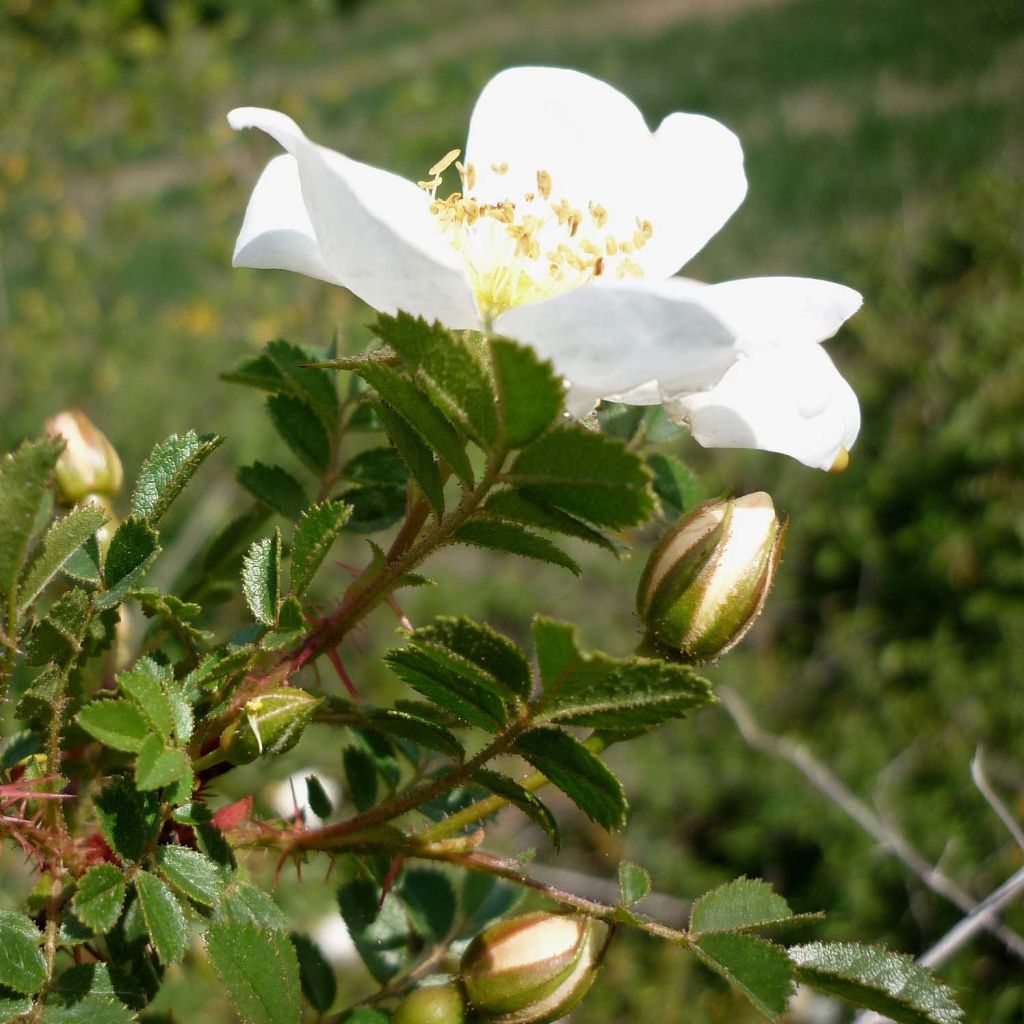

Rosa pimpinellifolia
Rosa pimpinellifolia
Rosa pimpinellifolia
Scotch Rose, Barrow Rose, Burnet Rose, Fox Rose, Wild Burnet Rose
Why not try an alternative variety in stock?
View all →This plant carries a 24 months recovery warranty
More information
We guarantee the quality of our plants for a full growing cycle, and will replace at our expense any plant that fails to recover under normal climatic and planting conditions.
From €5.90 for pickup delivery and €6.90 for home delivery
Express home delivery from €8.90.
Delivery to Corse prohibited: UE law prohibits the import of this plant from mainland France to Corse as part of the fight against Xylella fastidiosa. Please accept our sincere apologies.
More information
Does this plant fit my garden?
Set up your Plantfit profile →
Description
Rosa pimpinellifolia (synonym Rosa spinosissima), also known as the burnet rose, is a truly charming botanical species that is highly undemanding and valuable for landscaping poor and sandy terrains that other roses dislike. It grows as a bushy, very thorny plant, adorned with burnet-like foliage. The impenetrable thicket it forms is adorned throughout the summer with small cream-white burnet roses, sometimes washed with pale pink, followed by small black fruits when ripe. This rose will be remarkable in a defensive hedge. Tolerating harsh winters, its only requirement is to be planted in well-draining soil, even if it is chalky and dry.
The Rosa pimpinellifolia, from the Rosaceae family, is native to Western Europe and North Africa. Scotland has made this species its emblem, after the thistle. In Europe, it can be found in woods, thickets, and hedges, on cliffs, in dry places, and often on very chalky soil. Not grafted, the bush tends to produce suckers and colonize the space. It often has a wider-than-tall habit, so that it forms a very dense bush that is 90 cm (35in) tall and over 1m (3ft) wide at maturity. Under favourable conditions, it can reach or even exceed 1.5m (5ft) in all directions. The branches are covered with numerous straight prickles mixed with stiff hairs. The young stems and prickles are very red, then turn deep brown. The deciduous foliage is strongly divided into 5 to 13 leaflets with finely toothed edges. Light green in summer, it turns yellow with bronze hues in autumn before falling. Sometimes the leaves may develop dark, reddish spots. This is believed to be a characteristic of the species, caused by atmospheric conditions, which has no impact on the plant's health. Flowering begins in May-June and continues until the end of July. The numerous solitary flowers are adorable small burnet roses measuring 2 to 4cm (1 to 2in) in diameter. They are generally cream-white, sometimes delicately tinted with pale pink. Their centre is occupied by a bouquet of golden stamens. After pollination, numerous spherical fruits form, which turn from red to blackish-purple when ripe.
The passion for botanical roses and their direct hybrids is fully justified, especially in poor soils or under difficult climates: these roses are not only the parents of our modern roses but are generally more robust and very reliable. The burnet rose is a truly undemanding bush that will seduce, despite its many thorns. It will be useful in a natural or defensive hedge, as it forms a thorny mass that is difficult to cross. Its location should be carefully chosen, in full sun and in soil that does not retain moisture. It is beautiful in a wild garden, with other botanical roses (Rosa rugosa, Rosa hugonis), mock oranges, bluebeards, and shrubby cinquefoils that will take over.
Report an error about the product description
Rosa pimpinellifolia in pictures
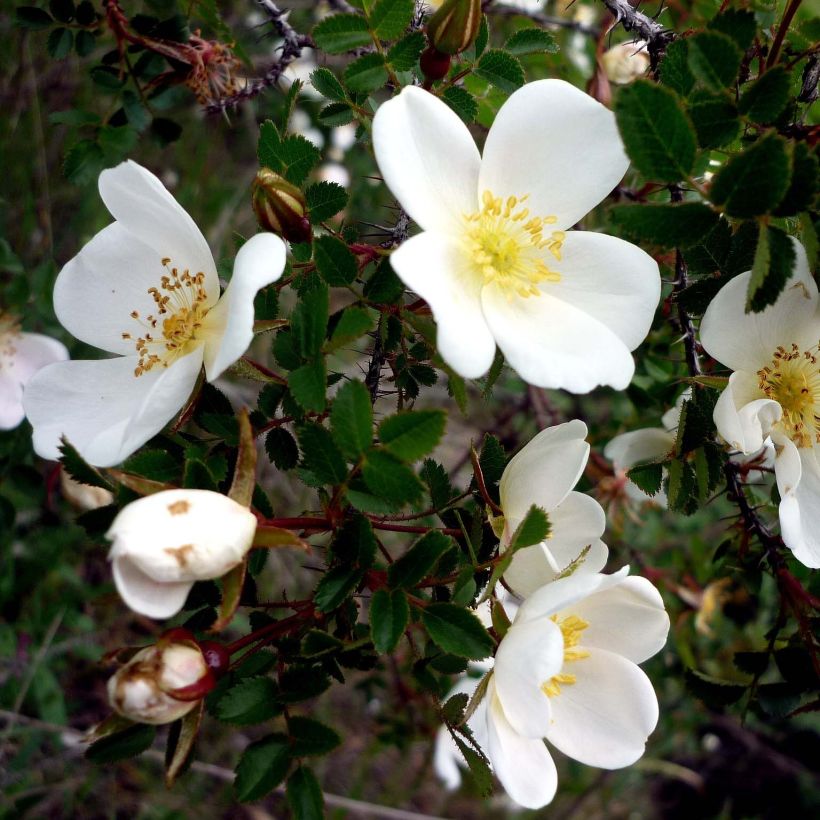

Plant habit
Flowering
Foliage
Botanical data
Rosa
pimpinellifolia
Rosaceae
Scotch Rose, Barrow Rose, Burnet Rose, Fox Rose, Wild Burnet Rose
Western Europe
Other Botanical or wild Roses
Planting and care
The spinosissima rose or pimpinellifolia requires properly drained soil that does not retain too much moisture. It tolerates limestone and poor soils, but dislikes suffocating, clayey, and compact soils. It prefers sandy soils. It thrives in all sufficiently sunny regions, and is not afraid of diseases, cold, or drought once well established. Hardy, this rose can withstand at least -20°C (1°F). It may be useful to remove dead wood in winter.
Roses are often stained or ugly at the end of summer, but this is not a problem for their development. These spots are not dangerous for the rose, it is a natural phenomenon.
Planting period
Intended location
Care
-
, onOrder confirmed
Reply from on Promesse de fleurs
Roses by purpose
Haven't found what you were looking for?
Hardiness is the lowest winter temperature a plant can endure without suffering serious damage or even dying. However, hardiness is affected by location (a sheltered area, such as a patio), protection (winter cover) and soil type (hardiness is improved by well-drained soil).

Photo Sharing Terms & Conditions
In order to encourage gardeners to interact and share their experiences, Promesse de fleurs offers various media enabling content to be uploaded onto its Site - in particular via the ‘Photo sharing’ module.
The User agrees to refrain from:
- Posting any content that is illegal, prejudicial, insulting, racist, inciteful to hatred, revisionist, contrary to public decency, that infringes on privacy or on the privacy rights of third parties, in particular the publicity rights of persons and goods, intellectual property rights, or the right to privacy.
- Submitting content on behalf of a third party;
- Impersonate the identity of a third party and/or publish any personal information about a third party;
In general, the User undertakes to refrain from any unethical behaviour.
All Content (in particular text, comments, files, images, photos, videos, creative works, etc.), which may be subject to property or intellectual property rights, image or other private rights, shall remain the property of the User, subject to the limited rights granted by the terms of the licence granted by Promesse de fleurs as stated below. Users are at liberty to publish or not to publish such Content on the Site, notably via the ‘Photo Sharing’ facility, and accept that this Content shall be made public and freely accessible, notably on the Internet.
Users further acknowledge, undertake to have ,and guarantee that they hold all necessary rights and permissions to publish such material on the Site, in particular with regard to the legislation in force pertaining to any privacy, property, intellectual property, image, or contractual rights, or rights of any other nature. By publishing such Content on the Site, Users acknowledge accepting full liability as publishers of the Content within the meaning of the law, and grant Promesse de fleurs, free of charge, an inclusive, worldwide licence for the said Content for the entire duration of its publication, including all reproduction, representation, up/downloading, displaying, performing, transmission, and storage rights.
Users also grant permission for their name to be linked to the Content and accept that this link may not always be made available.
By engaging in posting material, Users consent to their Content becoming automatically accessible on the Internet, in particular on other sites and/or blogs and/or web pages of the Promesse de fleurs site, including in particular social pages and the Promesse de fleurs catalogue.
Users may secure the removal of entrusted content free of charge by issuing a simple request via our contact form.
The flowering period indicated on our website applies to countries and regions located in USDA zone 8 (France, the United Kingdom, Ireland, the Netherlands, etc.)
It will vary according to where you live:
- In zones 9 to 10 (Italy, Spain, Greece, etc.), flowering will occur about 2 to 4 weeks earlier.
- In zones 6 to 7 (Germany, Poland, Slovenia, and lower mountainous regions), flowering will be delayed by 2 to 3 weeks.
- In zone 5 (Central Europe, Scandinavia), blooming will be delayed by 3 to 5 weeks.
In temperate climates, pruning of spring-flowering shrubs (forsythia, spireas, etc.) should be done just after flowering.
Pruning of summer-flowering shrubs (Indian Lilac, Perovskia, etc.) can be done in winter or spring.
In cold regions as well as with frost-sensitive plants, avoid pruning too early when severe frosts may still occur.
The planting period indicated on our website applies to countries and regions located in USDA zone 8 (France, United Kingdom, Ireland, Netherlands).
It will vary according to where you live:
- In Mediterranean zones (Marseille, Madrid, Milan, etc.), autumn and winter are the best planting periods.
- In continental zones (Strasbourg, Munich, Vienna, etc.), delay planting by 2 to 3 weeks in spring and bring it forward by 2 to 4 weeks in autumn.
- In mountainous regions (the Alps, Pyrenees, Carpathians, etc.), it is best to plant in late spring (May-June) or late summer (August-September).
The harvesting period indicated on our website applies to countries and regions in USDA zone 8 (France, England, Ireland, the Netherlands).
In colder areas (Scandinavia, Poland, Austria...) fruit and vegetable harvests are likely to be delayed by 3-4 weeks.
In warmer areas (Italy, Spain, Greece, etc.), harvesting will probably take place earlier, depending on weather conditions.
The sowing periods indicated on our website apply to countries and regions within USDA Zone 8 (France, UK, Ireland, Netherlands).
In colder areas (Scandinavia, Poland, Austria...), delay any outdoor sowing by 3-4 weeks, or sow under glass.
In warmer climes (Italy, Spain, Greece, etc.), bring outdoor sowing forward by a few weeks.

































